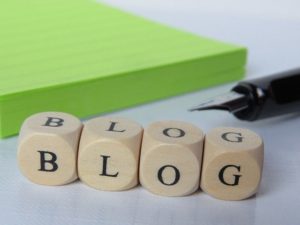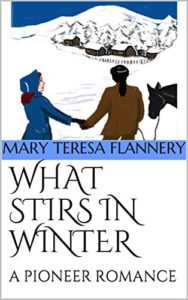Les Farley
Nov 22, 2021 | Uncategorized

The life of a writer can be a lonely one. You’re wrapped up and caught in a world of your own which you intend to reveal to others. The time it takes to accomplish that can be long. Months or years can drag along as the process takes place. During that time, you conduct other aspects of your life and battle with the negativity that, sometimes, accompanies you on this road of story-telling that you have chosen.
What if you didn’t have to wait until publication to share your creation with interested parties? That’s what attracted me to Amazon’s new Vella platform. If you’re like me, you look for encouragement along the way. That is sometimes hard to find. This new platform allows you to share your story, in serial format, with readers. The first three episodes are free to read. Just like test-driving a vehicle, they can take your story for a spin to see if they like it. No commitment, no questions asked. Stories are browsed by genre and their popularity is evidenced by ‘thumbs up’ which are given by readers.
Readers, who are new to the Vella experience, are also given two hundred ‘tokens’ to unlock episodes after the first three. At this point, they still haven’t spent any money. It’s only after they exhaust the free tokens that anything is spent out-of-pocket. They may choose to ‘follow’ a story if it’s enjoyable enough for them to continue. Instead of waiting months to get satisfaction and encouragement from readers, I’m feeding off of the excitement of people reading my episodes and giving thumbs up.
If I’m already writing chapters of my story and keeping them until the story is complete, why wouldn’t I wish to bring my treasures out one by one and get encouragement from the response? One chapter equates to one episode. That isn’t a requirement. That just makes perfect sense to me. My word count varies from 1300 to 2200 words per chapter/episode. I believe that is also the reason this new platform appeals to readers. The average person is too busy to invest a lot of time in an activity. But almost anyone has ten or fifteen minutes – one episode. Something else that I like is that they read directly from a window that pops up off the Amazon page. No download is necessary.
On your Kindle help page, the Vella Connection is with the Hardcover option on the left side of the screen. You’ve probably seen it even if you haven’t checked into it. I’m glad I did. Once you get started, you simply “Create Story” and as you add episodes, you “Manage Your Story”. Uploading is more simplified than with normal ebooks because you aren’t concerned with pricing. The reports allow you to monitor how many people are reading your episodes.
It’s normal to have more people read the first three and then fewer people to continue with the story. They aren’t spending tokens until they surpass episode three. That’s okay. It still serves as encouragement – something that I desperately need. The biggest, most unexpected blessing that I’ve received from this experience is the bonus that was issued for September AND October. I was completely blown away by that. Most of you sell far more books than I do. A bonus never entered my mind. I’m still riding high over that.
My story, “Thinking Inside The Box” is approximately sixty percent complete. After the last episode is published to the Vella platform and I’m satisfied that all interested persons have enjoyed it, I simply remove it from the platform. It must be off the platform for sixty days before it can be published in the normal fashion. Guess what! Sixty days is what I’ll need to do another round of edits and make changes in the story. It’s a perfect fit in every way. If you can avail yourself of its use, I can't encourage you enough to do so. I can’t express how pleased I am with the experience. I’ll use it for each new story.
I’ll mention one last thing. At sixty percent completion, none of my readers have spent a cent. The next episode (fourteen) will reveal if anyone decides to spend. Their tokens are nearly exhausted. But they’ve read more than half of the story. And we all do giveaways in some form or another. I could go on and on but I think you can see how pleased I am. Happy writing.
Oct 24, 2021 | Editors' Blog, Expert, Uncategorized

Here is something I hear a lot when I ask an author about their book launch:
“Well, my friend checked it and she always finds mistakes on menus…”
I nod and smile reassuringly, but I know what’s coming next.
“But when the reviews came in, I was devastated.”
I immediately log onto Amazon and see the all-too-familiar one-star ratings and barbed comments.
“Shocking errors! Did a five-year-old write this?”
“Does the author not know how to spell their main character’s name the whole way through?”
“The action scenes were about as believable as a cartoon.”
When I ask how I can help, invariably the answer is:
“I don’t know. I put so much work into writing the script, and I checked it twice. The story is amazing – my family even said so.”
And here the first red light flashes brightly. The simple truth is: family and friends sugar coat things.
If you want your ego stroked, then ask your family and friends to read it and then press upload, but expect to get bitten by the review sharks and your sales to stop before they’ve even started. However, if you want your hard work and dedication to finishing your book to pay the dividends it deserves, then hire an editor.
Many authors suffer from script blindness; it’s that old adage of not being able to see the wood for the trees. Some are first-time authors who are flexing their writing muscles, while many just don’t have the tools or technical knowledge to be able to transfer their thoughts into believable text. Part of my job is to take your imagination and help you craft your worlds, flesh out your characters, and turn those fight scenes from yawns to hell, yeahs!
Consider this: have you ever read a story where every line of dialogue ends in an exclamation mark? It makes the inner monologue of the reader shout louder and louder, and is a common mistake writers make during the first or second draft. Your editor will deal with this issue, and many more like it during the process.
Another common one is the action scene when the hero shoots a weapon and the next thing, he drops a knife from the same hand. In the writer’s head, this works perfectly well; it’s not the same for the reader. Your editor will point this out and advise you to make changes.
Or even when Aunt Bessie, who has some vital information for the mystery to be solved, never appears in the story again. What about the Deus ex Machina, where something unexpected and implausible is brought into the story to resolve it or? It is the death of a story, and it happens all the time.
Even for the most experienced authors, an editor’s fresh pair of eyes is essential. Not just for the wayward full stop that disappears, but also to make sure that the reading experience flows from the beginning to the end. Once immersed in a story, there is nothing more annoying than reading something that doesn’t gel and being ripped out of the fiction world and back into the real one. Or even reading a good bit of non-fiction and saying, “Hang on…” If your writing stops the reader mid story and makes them pull up a web browser to check something, then you have a problem that could have easily been dealt with through the editing process.
Fiction is created in layers and should mostly be character driven. At the very heart, there are interesting people with motivations and quirks. You want your reader to cheer along with them, to love them, or even to hate them. They are the engine that powers your story, and a poorly constructed character will make the reader lose interest faster than the roadrunner can evade a certain coyote.
The developmental edit layer ensures that the story makes sense, that it has a clear beginning and end (or lead in to the next chapter/book), and that your characters are believable and fit within the context of your story.
The copyedit layer will look at the grammar, syntax, and consistency to ensure fitness, and the last layer is the proofread for final tweaks.
I often envisage an author typing “The End” and sitting back with that celebration cuppa to cheer a job well done, and indeed they should. But as that cup touches the table, I hope that their finger also presses the send button to deliver their baby into the safe hands of their editor, where it will be honed and polished into the finished article, ready to hit the publishers and wow the world.
On the back of every successful book, there is a picture of a smiling writer. Standing shoulder to shoulder with the writer, but invisible in the pictures, is the team, and the right hand is always an editor, someone they can rely on to be honest and respectful and to help them grow. All you need to do is find yours. Good luck and don’t forget: be genuine to your story and your readers.
Jun 15, 2021 | Uncategorized
Click here to access our International Dublin Festival:
Code: AWP2

Nov 30, 2020 | Expert, Uncategorized
One of the questions we ask when we get an edit request is: Do you plan to self-publish or publish traditionally? More and more the answer comes back that they want to self-publish.
If you plan to publish traditionally, often the publisher will give you their formatting requirements, or they will format your manuscript during their edit process. However, if you plan to self-publish, you’ll need to be concerned with formatting your manuscript – preferably from when you start to type it up.
Many of the things we point out here can be implemented at any time. But if you get used to setting your formatting up from the beginning, it will make life much easier for you when you do your pre-publish cleanup later. It will also let you see what your final manuscript will look like as it grows. Often, this will help you spot and correct mistakes or highlight formatting issues as they pop up too.
***
Be aware that we only work with MS Word in creating our own manuscripts and editing the work of other authors. So, if you use a different type of software to create your manuscript, the way you do things will likely be different. Also, we only publish using Amazon KDP. So again, if you use a different self-publisher, check with them to see what their formatting rules are.
***
Let’s start with setting up your manuscript.

Unfortunately, there’s no “Format” button on your keyboard
So, we’ll start by having you go to the “Home” heading in Word where you’ll find the standard word settings across the top.
Fonts
We typically work in either Times New Roman, Calibri or Calibri Light. All are easy to read and accepted by most publishing software. They are also easy to read and work with as you develop your manuscript.
Note: Some fonts, usually the more fancy and unusual fonts, will not be accepted by the publishing conversion software.
For font size, we use 12. This typically is what we publish in too. Anything smaller is too hard to read and it doesn’t add enough white space, so it jambs up the wording on the page. Anything larger takes up too much space and we think is overkill – unless you’re going for a “Large Type” book.
Note: We’ll talk more about white space a bit further down.
If you want something bigger to work with as you spend your days developing your manuscript, go to the lower righthand corner and use the zoom control to increase your display. We typically operate at 120 percent, which eases the eye strain and makes it easier to tell those commas from the periods.
Styles
Unless we’re doing something fancy, we typically use the standard style that shows up in Word. If you’d like something different, select the “Design” heading and choose a style that better fits what you’re looking for. If you type something into the body of the page, the changes will show as you slide your cursor across each of the styles to help you choose.
Line and Paragraph Spacing
For line spacing we prefer to use 1.15 rather than 1. This unjams the wording by adding a wee bit more white space, yet it doesn’t add much to the page count. It also makes things much easier on the eyes for the reader, and you as you write.
For paragraph spacing we do the same thing. We like to use 12pts between paragraphs. This again adds more white space to unjam things and is so much easier on the eyes.
Note: One of the things that drives us crazy as readers is to open a book and find page after page of jammed up wording running from top to bottom and edge to edge. Thus, we try to spread things out a bit and add white space.
We also know of no one who has refused to buy a book because it had an extra 10 or so pages from adding white space. We have, however, seen books put back on the shelf when we or others opened page after page to jammed up writing.
***

The above settings will get you off on the right foot as you type up your manuscript.
***
Some other common format issues.
- Do not use the “TAB” key to set your indents! Amazon’s conversion programs will barf all over your manuscript if you use the tab key to indent. Indent your paragraphs via the style setting or the “Increase indent” selection on the home page.
- Be sure to only use one space after a full stop (period).
- Chapter titles should be larger (we use 16 font size), centered on the page and we use a Calibri or Calibri Light font to help titles stand out a wee bit more. They should also always be proceeded by a page break on the previous page to make sure they appear at the top of a new page.
- One other thing we like to do is give each chapter a title. We consider chapter titles to be an enticement to pull the reader into the chapter. This is not as difficult as most writers seem to want to make it. Remember, you’re not trying to give anything away, just pull the reader in. So, find something enticing in the chapter that doesn’t give anything away. For example, don’t use titles like “Chapter 7 – Jackson Dies”. Instead try “Chapter 7 – Jackson’s in Trouble”. You’ll also have to be careful not make chapter titles too long. Make sure they don’t wrap to a second line.
- For indicating scene breaks or character changes, use *** centered, rather then ——————-. This way the break indication is always the same.
- Finally, if you go to the middle of the Home page header, you’ll see a backward P with the top filled in. If you left click on it, it will highlight every time you entered a space, hit enter to start a new paragraph or inserted a page break. This is extremely helpful when cleaning up your manuscript – such as finding and removing extra spaces, paragraph commands and making sure each new page starts with a page break, when needed.
***
Have we provided you with at least one new formatting tool or idea? Did we miss anything that you think should be added?
In our next blog we’ll add some more formatting items that apply to uploading and publishing your paperback.
***
Bob Boze lives in the south bay area of San Diego and his writing partner, Robyn Bennett, lives in Blenheim, on the south island of New Zealand. They are both published romance and non-fiction authors, editors, speakers and bloggers.
They offer a variety of writer and business services through their business website, Writing Allsorts. To find out more about the services they offer, go to https://writingallsorts.com/ and follow the links to their web sites to learn more about their books.
Something in particular you’d like to know about? We speak, write and do workshops on a ton of writing and business stuff. (Well, okay not a ton but a lot.) Just let us know. If it’s about social media or internet advertising or marketing, we’ll steer you to Laurence at BooksGoSocial, our expert. Anything else is fair game.
Jun 29, 2020 | Uncategorized

Blogging is one social media tool that a writer can, and should, add to their author platform.
Why blog?
Blogging is a critical tool for an author to have as part of their marketing platform. Most publishers will want to know if you blog, so if you are thinking of being traditionally published it’s definitely something that you should be doing. Remember to post interesting and fun topics that enable you to connect and engage with your audience and provide them with value.
Most authors’ goals for blogging will be that they want to get their readers to know them. Also, connect and engage with their readers. The word ‘engage’ is really important as you must be careful not to blog constantly to market your books or make it all about you.
Robyn’s vision of success for her blog was:
“I want a professional, but friendly and fun blog that promotes thought and discussion, and connects others in the young adult reading/writing community.”
Audience

It’s also important to blog about issues that are relevant to your readers ie if you write about romance then you should blog about romance. If you’re a thriller writer than you should write about thrilling (!) stuff.
Bear in mind the age of your audience. If you write children’s books then your blogs should be about things that interest children (and written with appropriate language) or draw the attention of the adults that will buy your books.
Think about what your audience would find fun, valuable, and what they’re interested in (movies, songs). Writing down your reader’s profile will help you keep your blogs focused.
When Robyn started blogging she wanted:
- To share information
- To find out what others were thinking
- To promote her books
- To connect with other writers.
Blogging Websites
The best and most popular websites for blogging are either WordPress or Weebly because most of their themes are free, and easy to use
What do I blog about?
Blog topics are numerous and can include everything from posting a short fiction piece, subtly promoting your upcoming book, interviewing a reader or another author, book reviews, talking about the setting of your latest story, or describing your writing process.
How long should a blog be?
Any length you’d like, however, try not to make it too long. People have limited time these days and you need to get to the point quickly.
How often should I blog?
Most sources suggest once a week if you want to keep yourself in front of your readers without being annoying, but don’t under estimate the time it takes to write a blog. Robyn normally spends four hours on blog writing, which includes finding appropriate photos.
How do I structure my blog?

Elements:
- Topic – Remember the audience
- Post Title – Would this headline interest or excite me enough to click through for a look? It’s important to use appropriate keywords so that when people put keywords into a search engine like Google, your article will hopefully appear somewhere on the first page.
- Images (300 x 200) pixels
- Opening paragraph with a hook
- Body (250 words in total)
- Provide links to your other posts
- Conclusion
- Call to action – Get your readers involved and encourage them to comment on your blog by asking them a question about the article at the end.
- When you’ve posted your blog on your website make sure you also post it to your other social media feeds – Pinterest, Facebook, Twitter etc
***
If you are already blogging how has that helped you as a writer in terms of connecting with your readers?
***
Robyn Bennett, lives in Blenheim on New Zealand’s South Island. Her writing partner Bob Boze lives in the South Bay area of San Diego. Both are published romance and non-fiction authors, editors, speakers and bloggers. Together they have over twelve published works and are collaborating on several more novels, short stories, articles and other works.
Bob and Robyn also offer a variety of writer and business services through their business website, Writing Allsorts. To learn more about them, their published works and the services they offer, go to https://writingallsorts.com/
Apr 16, 2020 | Interviews, Uncategorized
This week, we’re talking with Mary Teresa Flannery about her book, WHAT STIRS IN WINTER
 Tell us something unexpected about yourself!
Tell us something unexpected about yourself!
I write and draw with my left hand and do nearly everything else with my right.
Why do you write?
I'm a storyteller rather than a writer. Writing is a way of getting the story out of my consciousness. And I love making pictures with words!
Where did you get the inspiration for your current book?
After I moved to the Pacific Northwest of the USA. I saw that I was in a very historic place. The end of the Oregon Trail is only a few miles away! I ‘saw' the exhausted families from the 1840s reaching their destination after the long, dangerous trek across plains and rivers and mountains, a journey that took them six months by wagon. A story was born, an Irish lass Katie out for adventure and falling in love against her better judgement…and this area has a breathtaking beauty too. It's a love-letter to the Pacific Northwest.
What do you enjoy the most about your genre?
Happy Endings! I never read books that leave me aggravated and unhappy, and I want to guarantee the same for my readers.
How would you describe your writing process?
I begin with an idea, and it germinates. I never sit down and plot it out in full. I couldn't stick to that. What I think might be a minor character could assume a major role as the story develops. As for the physical process of writing, I'm a kitchen table writer. I can block out whatever else is happening around me. I use Scrivener and import into Word.
What do you think authors have to gain from participating in social media?
The fellowship of other authors, I find social media wonderful for the encouragement. We help each other a lot, with ideas and also practical things, even software reviews.
What advice would you have for other writers?
Seek ye first the Kingdom of God, and His righteousness, and all these things will be added to you.' That's my philosophy. I wanted to be a writer since age 11 or 12. But life happened, and I had to earn steady wages. I retired 3 years ago, and now a steady writing job has dropped into my lap. Be attuned to God's will for your life – it is the secret of happiness. Though I did not make writing my career, I had rich experiences in my 40 years working and now i have a pension. (very important, that)
How do you select your books’ titles and covers?
For my self-published works – I brainstorm Titles, narrow them down to five or six, then one always stands out. For covers, it's a bit tricky. Covers are so, so important, especially in particular genres. I made a lot of mistakes and got feedback and have altered covers. I bought a premade cover for ‘Melody in Tea' and it was worth it. ‘What Stirs in Winter' is all my own artwork, but it took a lot of testing and tweaking.
What's your next step?
I have to get started on my next commissioned Victorian romance for my publisher, PureRead! They buy them outright. I lose copyright but get paid into my hand. It's an arrangement that suits me very well. I also have to write Volume 3 of my own Series, ‘Delaford', a follow-up to Austen's Sense & Sensibility. I never thought I would see the day when I could call myself a writer proper!
 What book do you wish you had written?
What book do you wish you had written?
Any of Jane Austen's! They're so light and funny and deep too.
How do you react to seeing a new review for your book?
Sheer Delight! Someone read it!











 What book do you wish you had written?
What book do you wish you had written?
